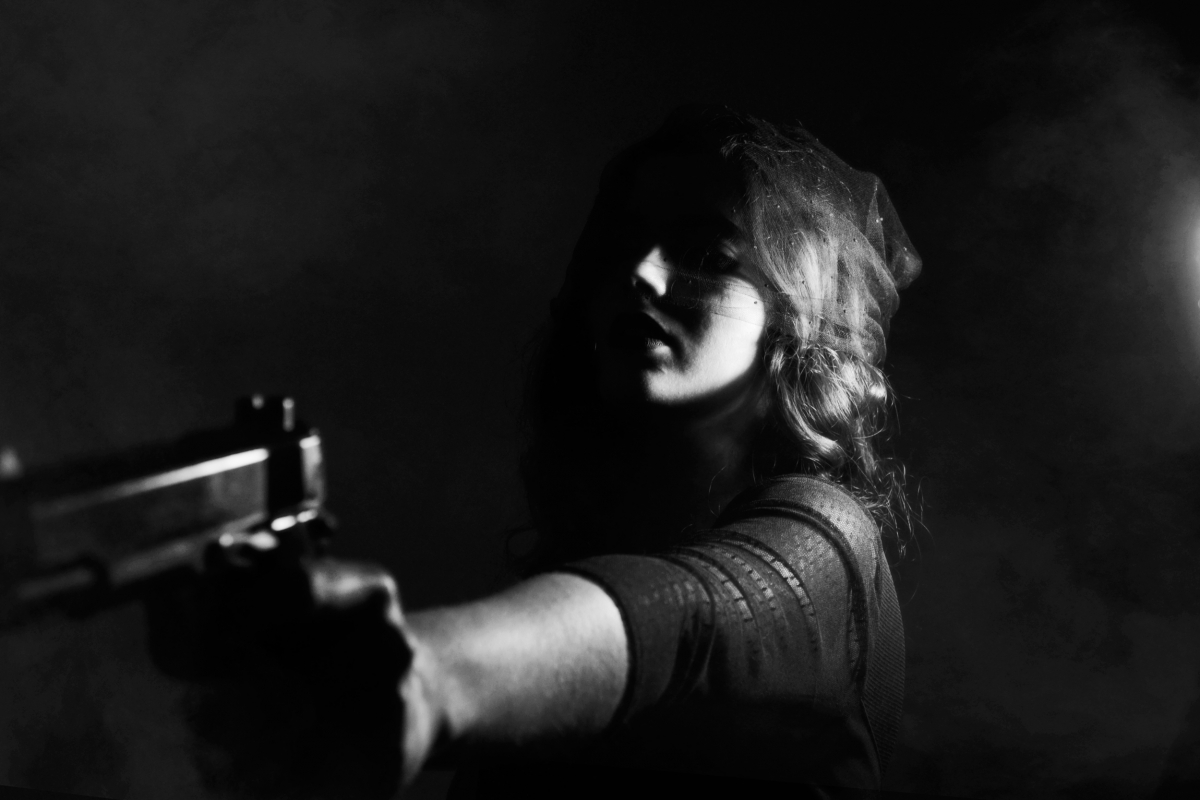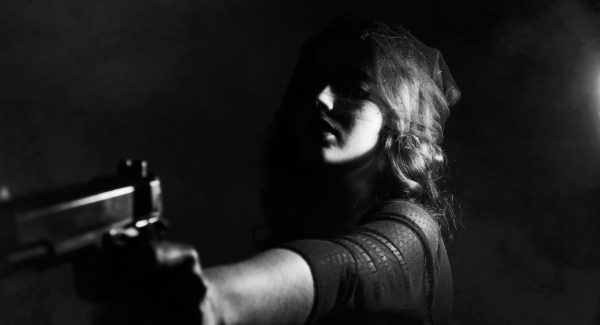
How vulnerable are armed criminals? Can one predict their intentions and actions just by watching them walking or standing somewhere? Psychologists and the police believe this is possible. They think this can be done by reading subtle clues in the appearance of a person. These clues can be meaningless for a novice, but are significant for a trained person.
While these tiny details can become visible for other people after an appropriate training, it is difficult to learn to suppress them. They can still be unconsciously shown by a criminal even though he is very skilled. Thus, a criminal may still unconsciously betray his or her intent by displaying cues, no matter how experienced or trained he is. So, what are these cues? In this article I will review a selection of scientific research on the issue within the field of psychology. The evidence derived from the literature is considered next in order to understand which emotional state, according to the offenders themselves, accompanies a criminal act. On top of that, the findings from experimental research on how an emotional state is being reflected in non-verbal cues and how this is recognized by other people will be presented. To conclude, the examples of applying knowledge about non-verbal cues to the security industry will be discussed.
Several studies find evidence that suggests that the act of committing a crime is associated with certain emotions. During a crime, or by preparing oneself to commit a crime, some affective processes are more likely to be present and to be reported by offenders than others, for example feelings of excitement, anxiety or anger (Cusson, 1993; Canter and Ioannou, 2004; Katz, 1988). The emotional responses of an offender to an offence are influenced by different factors including surveillance, alarms, and the consequences of the act. By merely thinking about these factors an offender can become fearful or excited, which can also change their physical behavior.
Another influential factor which can cause a change in the criminal’s emotional state is the experience of carrying a gun. Recent research conducted in England and Wales and commissioned by the Home Office shows that offenders tend to undergo different emotional states when carrying an illegal firearm (Hales, Lewis and Silverstone, 2006). Via interviews, the authors had collected offenders’ accounts of their own emotional responses when carrying a firearm. This study provides evidence that carrying an illegal firearm is associated with a range of emotions, for example feelings of safety, empowerment, and fear, which can be consciously evaluated and reported by the offender. The cognitive appraisal by an offender of such factors as presence of surveillance and possible following sanctions can, for example, induce feeling of fear of being caught. According to some criminals, the possessing of gun often activates a combination of such emotions as fear of being caught and empowering, or feeling of safety derived from the idea that no one can touch them.
Further, a large body of research shows that emotions can have effects that cannot be consciously evaluated but can still have powerful influences on someone’s appearance. Emotion has been found an influential factor for changing body language (Ekman and Friesen, 1967). Such body language may be much more difficult to hide than a weapon and can betray how a person really feels, even when the person attempts to conceal those feelings.
According to several researchers, body language (e.g. gait or changing of posture) might reflect relevant action tendencies that are closely linked with emotional states (Montepare, Goldstein, and Clausen, 1987; de Meijer, 1989; Wallbott, 1998; Hadjikhani and de Gelder, 2003). As an observer of non-verbal behavior one can obtain useful social knowledge about mood and intentions of others, from which one can make decisions concerning required actions. According to Meier-Faust (2002) human body language can be divided into two categories: structural information (e.g. facial features, body build) and kinetic information (e.g. facial expressions, gestures, body movements, or posture). Structural information can tell us about what kind of emotion a person is experiencing. Conversely, body movements and posture indicate the intensity of emotion and can physically illustrate what someone feels. This assumption is based on the early research of famous psychologist Paul Ekman who is a pioneer in the study of emotions and facial expressions. Ekman and Friesen (1969) investigated what facial expressions give away about a person. He showed that people who suppress emotional states often 'leak' the true emotion in fleeting facial micro-expressionswhich appear on the face for just 1/25th of a second. These flashes of emotions are beyond our conscious control, making them impossible to be masked. Furthermore, they can be spotted by a trained person. Contrary to what most people believed, he thus found that our facial expressions are not as controlled as we think. Even more surprising, one cannot truly play false with people by showing fake expressions, because there is always a chance that one’s face will betray oneself with inevitable and truly honest micro-expressions.
Nowadays Ekman, as a leading face-reading expert and advisor, is involved in training Transportation Security Administration officers in the United States. This training has become an apparent necessity, as research on emotional and non-verbal behavior has recently received more attention from the security world, possibly as a result of a heightened threat of terrorism. One example of how this research has been put into practice is the Screening of Passengers by Observation Techniques(SPOT), which is used in aviation and transportation security. It is based on the detection of individuals who show behavior that indicates they may be a threat (The Sunday Times, 2006). There is a strong belief that, rather than finding the threatening object itself (e.g. a concealed weapon, which is possible in too many ways), the identification of the individual bearing the threat is the better way to find the threat. At airports in the US, and recently also at some of the airports in the UK, security teams are present whose responsibility it is to watch travellers while they are entering the airport, checking luggage, or standing in line at security checkpoints. They monitor for readily apparent signs of potential threat such as inappropriate clothing (e.g. a heavy coat on a hot day), as well as more subtle signs which include gestures, conversations, and facial expressions of travelers. By undergoing SPOT training officers are particularly being taught to scan passengers for involuntary physical and psychological reactions that, according to behavioural scientists, may indicate stress, fear or deception. In other words, the officers are trained to recognise concealed emotions which can manifest in overall body movement, gait, or facial expressions.
Other specialists, who work for US Secret Service protecting the president, use special techniques to spot gun-carriers before they strike (Remsberg, 2007). Armed individuals supposedly show common behavioral patterns which distinguish them from unarmed subjects. It is therefore possible to catalogue visual cues which are indicative of a person who is carrying a concealed weapon. This is how it works: While observing a potential suspect the suspect’s ‘strong’ side is first identified (e.g. by observing which hand or arm a person usually uses for most actions, such as lightning cigarettes, holding, moving objects, or showing something to someone). Once the dominant side of the body is determined, the next step is to look at places on the suspect’s body where a gun can be hidden. The two most common places to hide a gun are the right front waistband and the small pocket of the back. The observation of arm movements, which reveal certain emotions one can experience while he/she is carrying a gun, can predict that someone is hiding a gun. Because the gun is a loose object, the suspects are constantly in fear it will slip, which makes them periodically touch it, consciously and unconsciously, to be sure it’s still there. The way that criminals with concealed weapons walk may also have peculiar characteristics. These characteristics are particularly noticeable when armed subjects are running or moving abruptly. Then they tend to hold the arm against the concealed weapon, either stiffly or with a very restrained swing. Another visual sign associated with walking with a concealed gun is that the stride on the side of the body holding the gun will be shorter than that on the other side. The arm may be held against the gun as a form of protective movement, especially if other people come closer to the suspect. The movement of the shoulder may also reveal a concealed gun if the criminal is seated in a vehicle. By looking closely at the movement of the shoulder it may be visible that the shoulder is moving up which can indicate that a gun being drawn from the waistband, or dipping down, which may mean that the person is hiding drugs, booze, or weapons.
To summarize, although just having a gun under a jacket does not always mean that an offence is to take place immediately, carrying an illegal weapon as a first step towards committing a crime may evoke certain emotions in the would-be offender. These emotions may result in a change of his or her body movement and facial expressions which can be spotted through careful observation of physical signs or emotional cues conveyed by the body and face. In terms of safety it would be definitely worth to improve one’s own observation skills to be able to anticipate whether one is in the suspicious social situation where the possibility exists to deal with an armed individual. Be aware of danger signs and it won’t catch you by surprise.
References
Canter, D.V., Ioannou, M. (2004). Criminals’ Emotional Experiences During Crimes. International Journal of Forensic Psychology, 1 (2), 71-81.
Cusson, M. (1993). Situational Deterrence: Fear During the Criminal Event. Crime prevention studies, 1, 55-68.
Ekman, P. (1965). Differential Communication of Affect by Head and Body Cues. Journal of Personality and Social Psychology, 2, 725-735.
Ekman, P. & Friesen, W.V. (1967). Head and Body in the Judgment of Emotion: A Reformulation. Perceptual and Motor Skills, 24, 711-724.
Ekman, P. & Friezen, W.V. (1969). Nonverbal Leakage and Clues to Deception. Psychiatry, 32, 88–105.
Ekman, P. & Friesen, W.V. (1974). Detecting Deception From the Body or Face. Journal of Personality and Social Psychology, 29, 288–298.
Hales, G., Lewis C., and Silverstone D. (2006). Gun Crime: the Market in and Use of Illegal Firearms. Home Office Research Study 298.
Hadjikhani, N. & de Gelder, B. (2003). Seeing Fearful Body Expressions Activates the Fusiform Cortex and Amygdala. Current Biology, 13, 2201-2205.
Katz, J. (1988). Seduction of Crime: Moral and Sensual Attractions in doing Evil. USA: Basic Books.
Meier-Faust, T. (2002). The Importance Non-verbal Communication in Diagnostic Assessment in the Traffic Psychological Exploration. Paper presented at BDP congress for traffic psychology 2002, University of Regensburg.
Meijer, M. de (1989). The Contribution of General Features of Body Movement to the Attribution of Emotions. Journal of Nonverbal Behaviour, 13 (4), 247-269.
Montepare, J. M., Goldstein, S.B. and Clausen, A. (1987). The Identification of Emotions from Gait Information. Journal of Nonverbal Behaviour, 11 (1), 33-43.
Remsberg, C. (2007). Officer Survival. Spotting Armed Suspects. The Police Marksman, July/Augustus, 16-19.
The Sunday Times (2006). ‘Spot’ teams to spy on passengers. Business front of alleged link man. Retrieved August 20, 2006, from http://www.timesonline.co.uk/tol/news/uk/article614380.ece.
Wallbott, H.G. (1998). Bodily Expression of Emotion. European Journal of Social Psychology, 28, 879-896.




